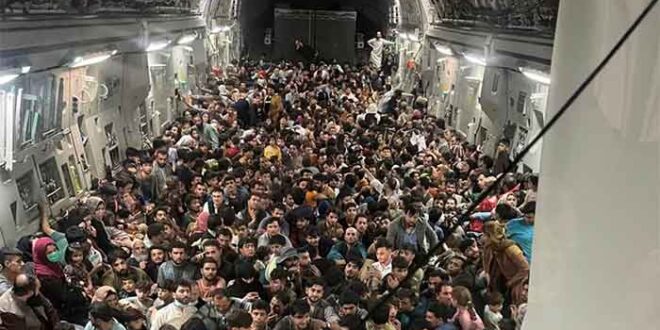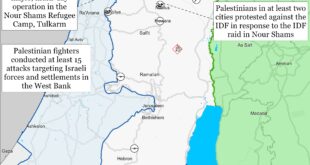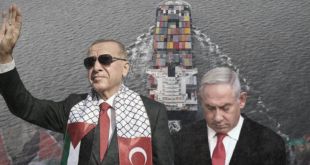The history of humankind of the past hundred years have thrown up a gamut of emotions and heart-wrenching crises. An accentuating challenge is the displacement of millions upon millions of peoples throughout the planet. People are forced to flee or migrate from their homeland or places of birth for a variety of reasons. At the international level United Nations High Commissioner for Refugees holds annual consultations with Governments and Non-governmental Organizations to address the worsening crises.
By the end of 2021, 89.3 million people were forcibly displaced worldwide, including 27.1 million refugees, 21.3 million refugees under UNHCR’s mandate, 5.8 million Palestine refugees under United Nations Relief and Works Agency for Palestine Refugees in the Near East’s (UNRWA) mandate, 53.2 million internally displaced people, 4.6 million asylum seekers and 4.4 million Venezuelans displaced abroad.
Asylum seekers submitted 1.4 million new claims. The United States of America was the world’s largest recipient of new individual applications (188,900), followed by Germany (148,200), Mexico (132,700), Costa Rica (108,500) and France (90,200).
By May 2022, more than 100 million people were forcibly displaced worldwide by persecution, conflict, violence, human rights violations or events seriously disturbing public order. Around half of those classified as refugees under the age of 18. If we also look at the statistics of people who are forced to migrate or displaced within their own countries these figures would be much higher. Last year due to climate change and disasters, nearly five million people in India were internally displaced as per the report of United Nations.
The mass movement of such large sections of the populations make it clear that the peace, stability and prosperity of different regions of the world are interconnected and that solutions cannot be intelligently considered in isolation from this global reality. Indeed, understanding the root causes of mass migration, people risking their lives to find refuge and the problems of internal displacement has past historical antecedents. However, my focus is upon the current situation as it obtains in 21st century global society.
Migrants, including refugees, and internally displaced persons, are people away from their home region or country, whose rights as noted in the Universal Declaration of Human Rights are trampled upon such as the right to life, right to livelihood, right to education, to list just a few. In fact, mass migration has challenged us to look beyond the nation state, to perceive the world from a global perspective and has heightened our awareness of the interconnectedness of humanity. Indeed, “in a world of interdependent peoples and nations the advantage of the part is best to be reached by the advantage of the whole”. There is a flip side, too, beyond those who count as forcibly displaced persons there is a significant proportion of peoples who migrate for other reasons namely higher education, work, or family to developed countries. In 2020, there were approximately 281 million international migrants worldwide.
Large-scale population movements are nothing new–global international migration rates have remained surprisingly stable, hovering around some three percent of the world’s population since at least the 1960s–the sense of crisis that present-day migration generates provides an opportunity to reflect on the root causes of this movement, to see the ways in which migration and displacement are expressions of deeper processes of integration and disintegration transforming our world.
Identifying durable solutions for the myriads of crises causing people to flee their homes deserve the highest attention of the international community. For if not through the identification and creation of lasting solutions, how else can we hope to prevent the situation from deteriorating even further? The current dire humanitarian situation caused by the war in Europe calls for a profound, dispassionate and collective reflection on the underlying conditions that have caused the mass movement of populations. The unprecedented displacement of millions of people globally cannot only be viewed in terms of “managing migration”. It is becoming increasingly apparent that the ongoing suffering of countless individuals who risk their lives for greater security is yet another symptom of a much deeper and far-reaching concern.
The causes for internal and international migration, whether forced or voluntary, should not be analysed separately from patterns of displacement and refugee migration. The wide scale displacement of populations around the world–due to conflict, natural disasters, educational or livelihood constraints–are also part of the social transformations of the modern period. The welfare of any segment of humanity is inextricably bound up with the welfare of the whole. Yet, despite this reality, evident from the recent global health pandemic caused by Covid-19, individuals, companies, and countries continue to prioritize their own well-being in isolation from their neighbours’. The gap between the humanity’s richest and poorest is widening as unprecedented quantities of wealth are amassed by a relative few. The pursuit of power and economic gain continues to overrule concern for how the environment, which sustains all of humanity, is affected. These social ills nurture the conditions within which prejudice, insecurity, and conflict take root. In this light, it is easier to see why, although common discourse and legal pathways for migration often make a hard distinction between “refugees” and “economic migrants,” the reality is much more blurred. People’s movement in response to these shifting forces may be conceptualized as occurring along a spectrum of “forced” to “voluntary,” with much contemporary migration occurring somewhere in the middle.
Let me share a few lines from the 2022 message of the United Nations Secretary General, Antonio Guterres: “On World Refugee Day, we reflect on the courage and resilience of those fleeing war, violence, and persecution – and we recognize the compassion of those who welcome them. Today, the global refugee population is at a record high. The war in Ukraine has triggered the largest and fastest displacement in Europe since World War II. Together with the women, children, and men fleeing conflict elsewhere in the world, the total number of forcibly displaced people has reached 100 million – a grim indictment of our times. [Let us] affirm a fundamental tenet of our common humanity: everyone has the right to seek safety – whoever they are, wherever they come from, and whenever they are forced to flee….Across the world, refugees have brought new life, prosperity, and rich cultural diversity to their host communities. Protecting refugees is a responsibility we all share….Let us stand together in solidarity… And let us never lose sight of our common humanity.”
Our shared human identity has its roots in our spiritual nature, the immortal rational soul. Recognizing this, will help us not just in overriding our differences and limiting identities but rather inspire us to take steps for bringing about cooperation and harmony among contending groups and the comity of nations. This acceptance calls for an urgent moral imperative to reexamine systems, structures, policies and more importantly the attitudes and assumptions that have shaped them. For, “the earth is but country and humankind its citizens.”
 Eurasia Press & News
Eurasia Press & News




